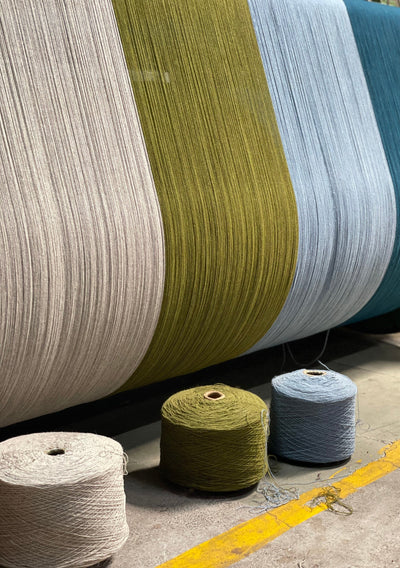How to care for wool and make it last

We know that shopping sustainably is good for the planet - investing in items that are designed to last, choosing to purchase through a B Corp business, and opting for renewable materials where possible. However, part of being a conscious consumer isn’t just about what you buy - it’s about how to look after the pieces you choose.
We can’t stop talking about how wonderful wool is - it’s biodegradable, durable, hypoallergenic and naturally sourced. It’s also surprisingly easy to take care of, so your blanket, scarf or accessory can be worn for years to come.
How to care for a wool blanket or scarf
How you look after your woollen product can determine how long it lasts, and luckily you only need to take a few relatively simple steps to ensure your pieces stand the test of time.
How to store wool
Firstly, how you store your wool can determine how long it lasts. Of course, we’re going to suggest wearing or displaying your wool as pride of place in your wardrobe or home, but for moments when your blanket or scarf needs to be tucked away, an air-tight bag or box is your safest bet.
Pesky moths love a wool feast, so you want to avoid hanging your wool in a place where it could be chewed on. Keep your blanket or scarf gently folded so it doesn’t become misshapen, but if you do need to hang them, a padded or shaped hanger will preserve your wool’s shape.
Looking after your wool
Wool is naturally odour and stain resistant, so the work you need to do to keep it looking spick and span should be minimal. If you notice any pills or loose fibres, a wool brush can help remove them, as well as any dust or dirt that may be trapped in the fabric.
Depending on the type of wool you have - Recycled, Lambswool, Cashmere etc - the washing process can differ. Our Recycled Wool can be popped in the washing machine if necessary, but we always recommend a gentle hand wash for any of our woollen products. We recommend a proper wool detergent if you’re giving your wool a wash.
After washing, lay your blanket or scarf flat so it retains its shape - putting it in the drier is likely to shrink the piece, and leave it looking worse for wear.

Reuse, repair, upcycle
If, after years of use, you notice any holes or think your wool is past its prime, we will always recommend reusing, repairing or upcycling your blanket or scarf. Or, if it’s still in a usable condition, consider donating to charity.
There are many ways you can give your wool a new lease of life - sewing patches on it, repairing holes, or turning your fabric into something entirely different like a coat.
Top tips for making your wool last
- Keep your wool out of direct sunlight if possible. We’re not talking about a few picnics in the sun, but having your wool by an open window or outside for a long time. This could potentially fade the pattern on your favourite blanket!
- Invest in high-quality wool. We’re sad to say that some wool, especially when mixed with a high quantity of other fibres, can break or become damaged a lot quicker. Choose wool that is sourced sustainably,
- If you notice a stain, then spot treat it straight away as opposed to washing the full garment.































